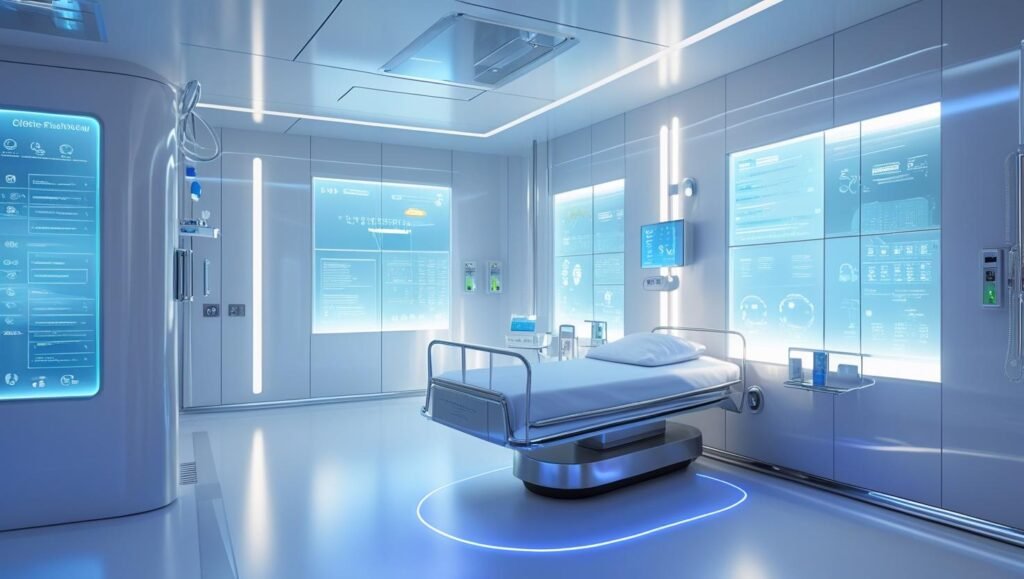IoT Transforms Healthcare: Best Innovations Now

Introduction
Imagine a world where your doctor knows you’re sick before you feel symptoms. That’s the power of IoT in healthcare! The Internet of Things (IoT) connects devices like smart watches and sensors to share health data instantly. It’s making healthcare faster, smarter, and more personal. In this article, we’ll explore how IoT is changing hospitals, homes, and lives with amazing innovations. Let’s dive into the best ways IoT is transforming healthcare today!
What Is IoT in Healthcare?
IoT means devices that talk to each other over the internet. In healthcare, these devices include wearables, monitors, and even smart pills. They collect data like heart rate, blood sugar, or sleep patterns. This data helps doctors make better decisions. IoT makes healthcare easier for patients and saves time for medical staff.
Why IoT Matters in Healthcare
IoT isn’t just cool tech—it solves real problems. Here’s why it’s a game-changer:
- Real-Time Monitoring: Devices track health 24/7, catching issues early.
- Better Access: Patients in remote areas can connect with doctors.
- Lower Costs: IoT reduces hospital visits by managing care at home.
Top IoT Innovations in Healthcare
IoT is bringing exciting tools to healthcare. Let’s look at the best innovations happening now.
Wearable Health Devices
Smartwatches and fitness bands are more than gadgets. They’re health heroes! These IoT devices track your steps, heart rate, and even oxygen levels. For example, a smartwatch can alert you if your heart beats too fast. Doctors use this data to spot problems early. Patients love how easy it is to stay healthy.
Remote Patient Monitoring
IoT helps doctors keep an eye on patients from miles away. Sensors at home measure blood pressure or glucose levels. This data goes straight to the doctor’s computer. It’s perfect for older adults or people with chronic illnesses. Remote monitoring means fewer trips to the hospital and more comfort at home.
Smart Hospitals
Hospitals are getting smarter with IoT. Imagine beds that tell nurses when a patient needs help. Or machines that order supplies when they’re low. IoT connects everything in a hospital to work better together. This saves time, reduces errors, and lets doctors focus on patients.
IoT in Emergency Care
In emergencies, every second counts. IoT devices like connected ambulances send patient data to hospitals before they arrive. Doctors can prepare faster, saving lives. For example, an IoT heart monitor can share real-time data during a heart attack. This helps paramedics and doctors act quickly.

Benefits of IoT in Healthcare
IoT isn’t just about fancy devices. It brings big benefits to patients and doctors alike. Here’s a quick look:
| Benefit | How IoT Helps |
|---|---|
| Early Detection | Spots health issues before they get worse. |
| Personalized Care | Tailors treatment to each patient’s needs. |
| Time Savings | Automates tasks so doctors focus on care. |
| Safety | Reduces errors with accurate data. |
These benefits make healthcare more human and helpful. IoT is like a trusted friend, always watching out for you.
Challenges of IoT in Healthcare
IoT is amazing, but it’s not perfect. There are some hurdles to overcome. For example, keeping patient data safe is a big concern. Hackers could steal sensitive information. Another challenge is making sure all IoT devices work together smoothly. Different brands sometimes use different systems. Solving these issues is key to making IoT even better.
What’s Next for IoT in Healthcare?
The future of IoT in healthcare is bright! New ideas are popping up every day. Think about smart pills that tell doctors when you’ve taken your medicine. Or AI-powered IoT devices that predict health problems before they start. These innovations could save millions of lives. But there’s so much more to explore…
Want to dive deeper into how IoT is shaping healthcare? Click the button below to read our full research paper!
[Read the Full Research Paper]




